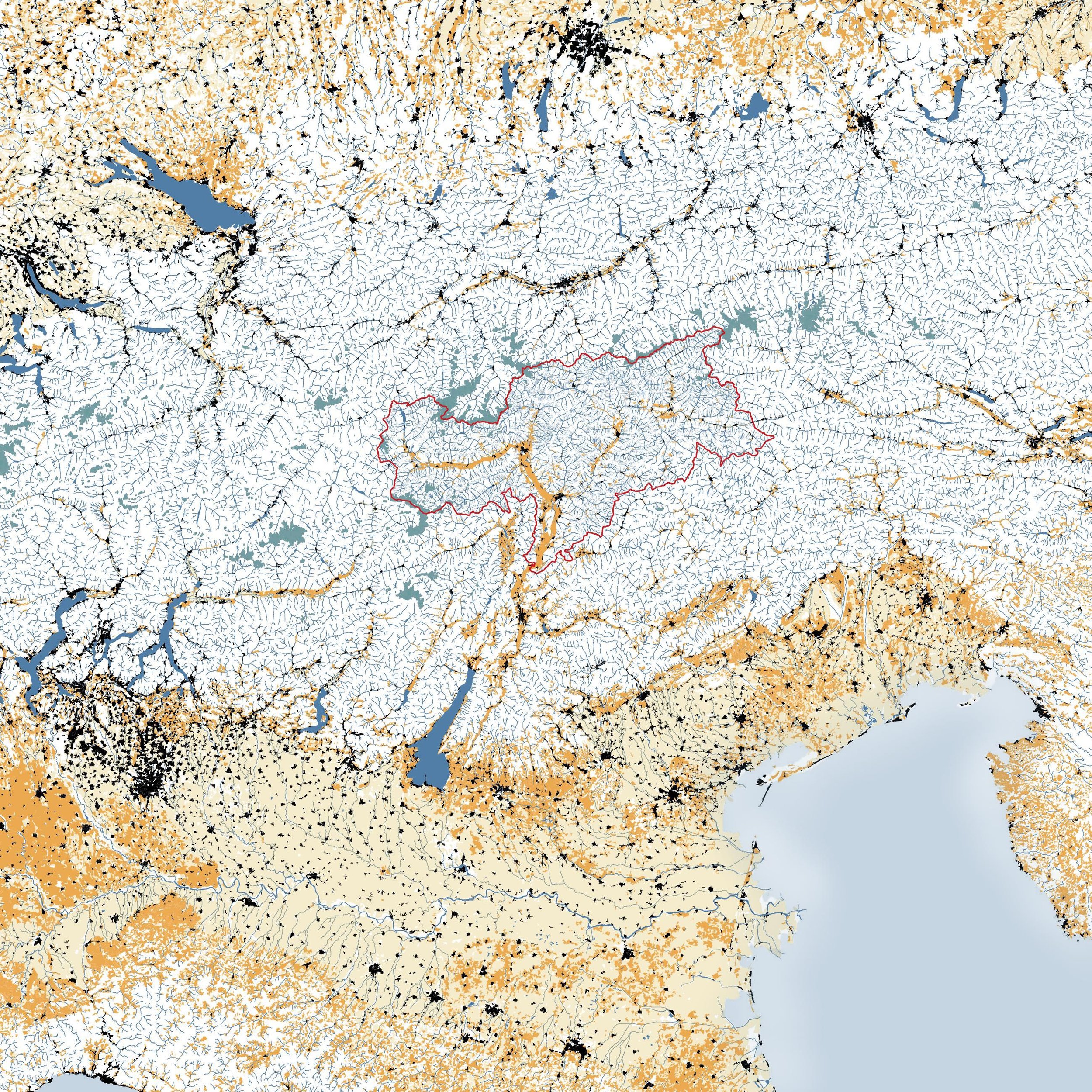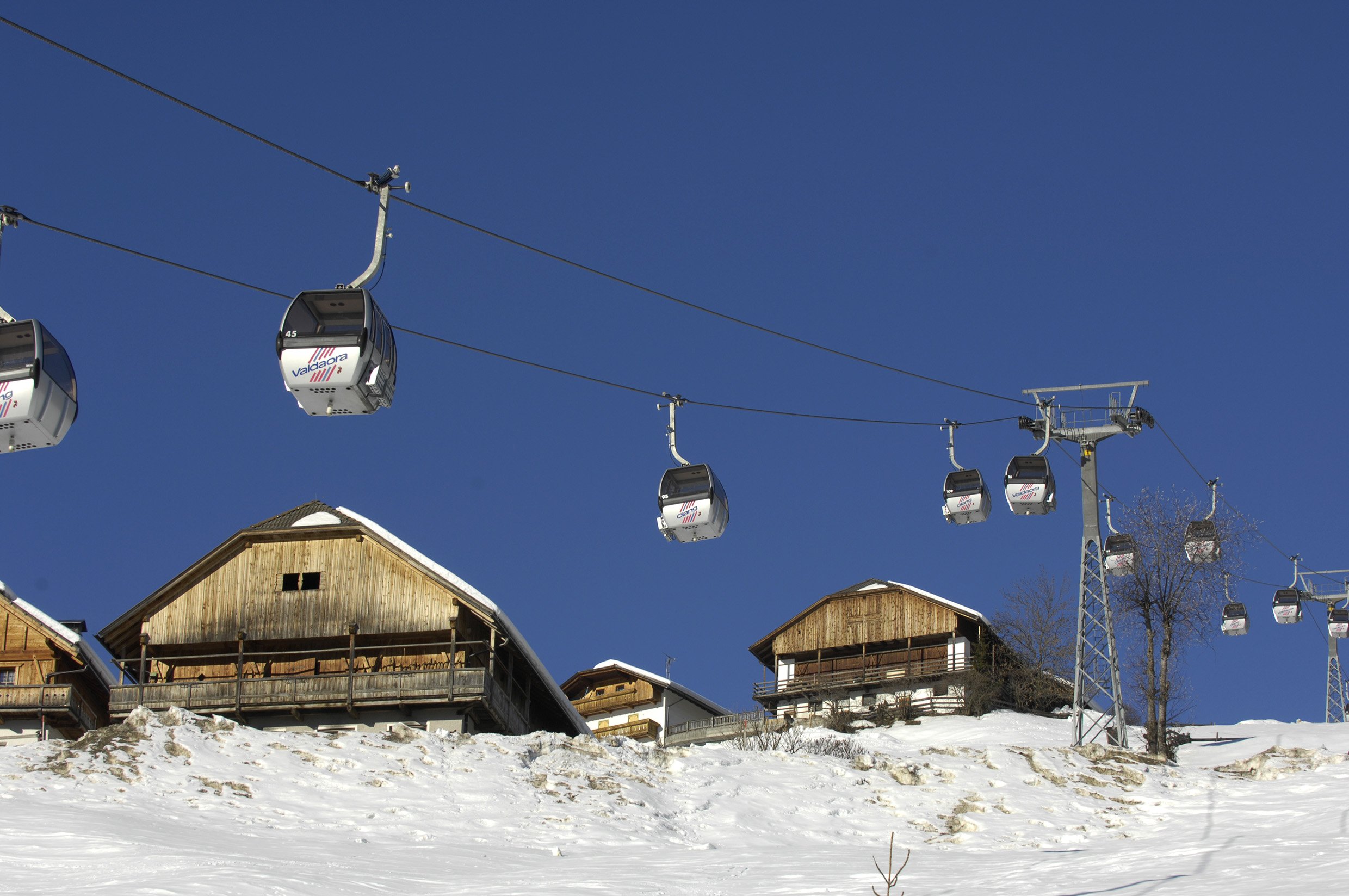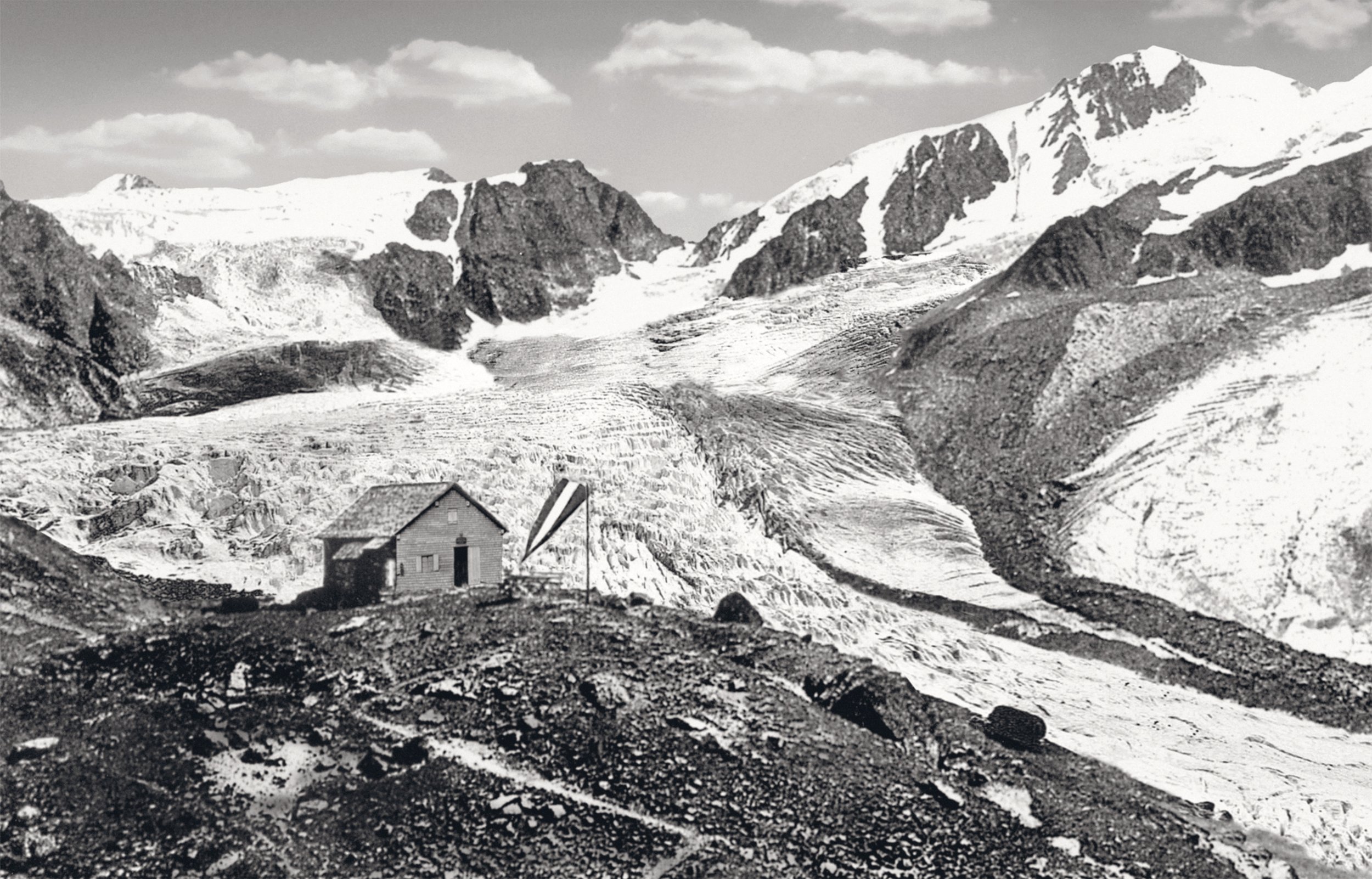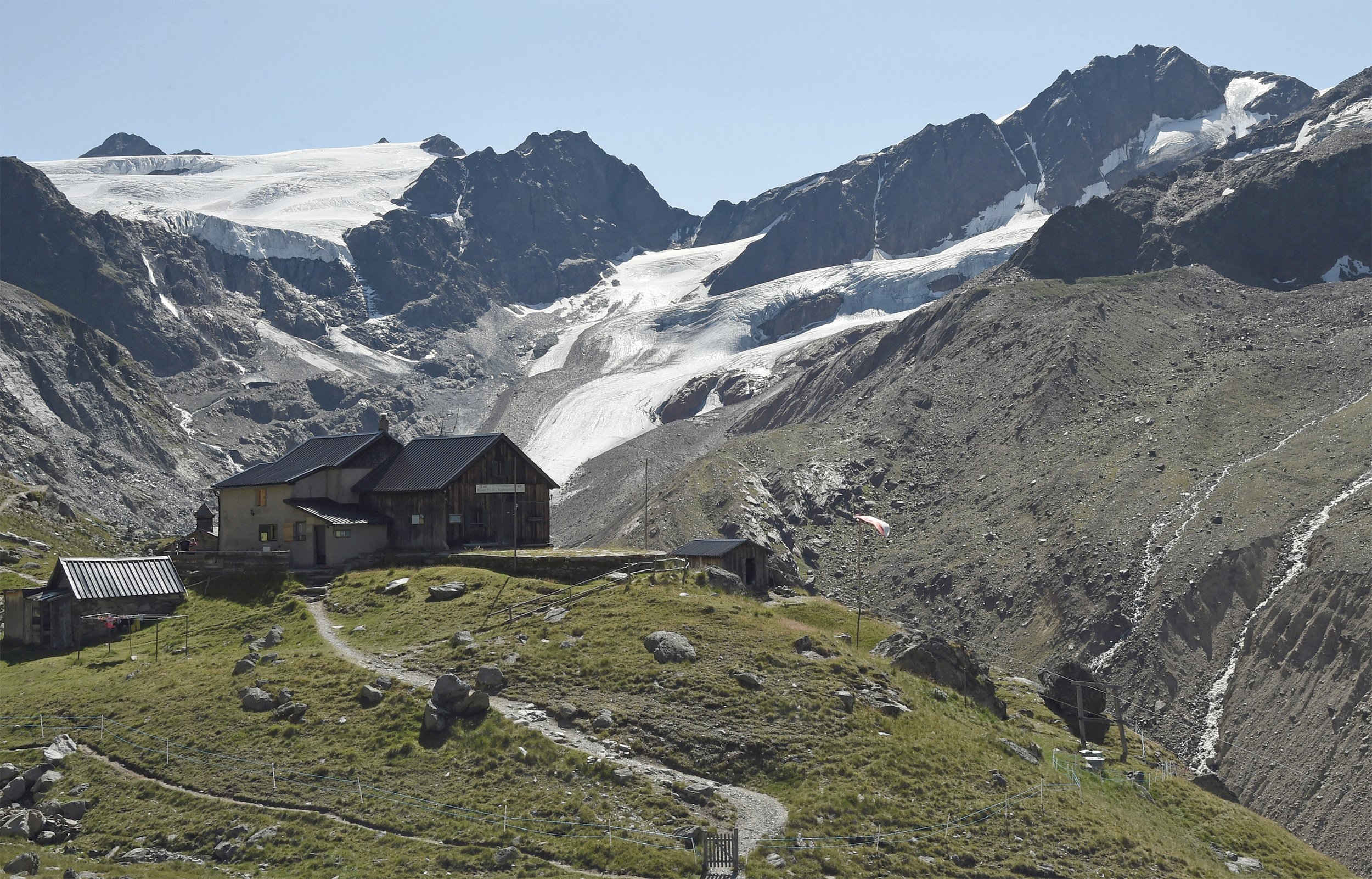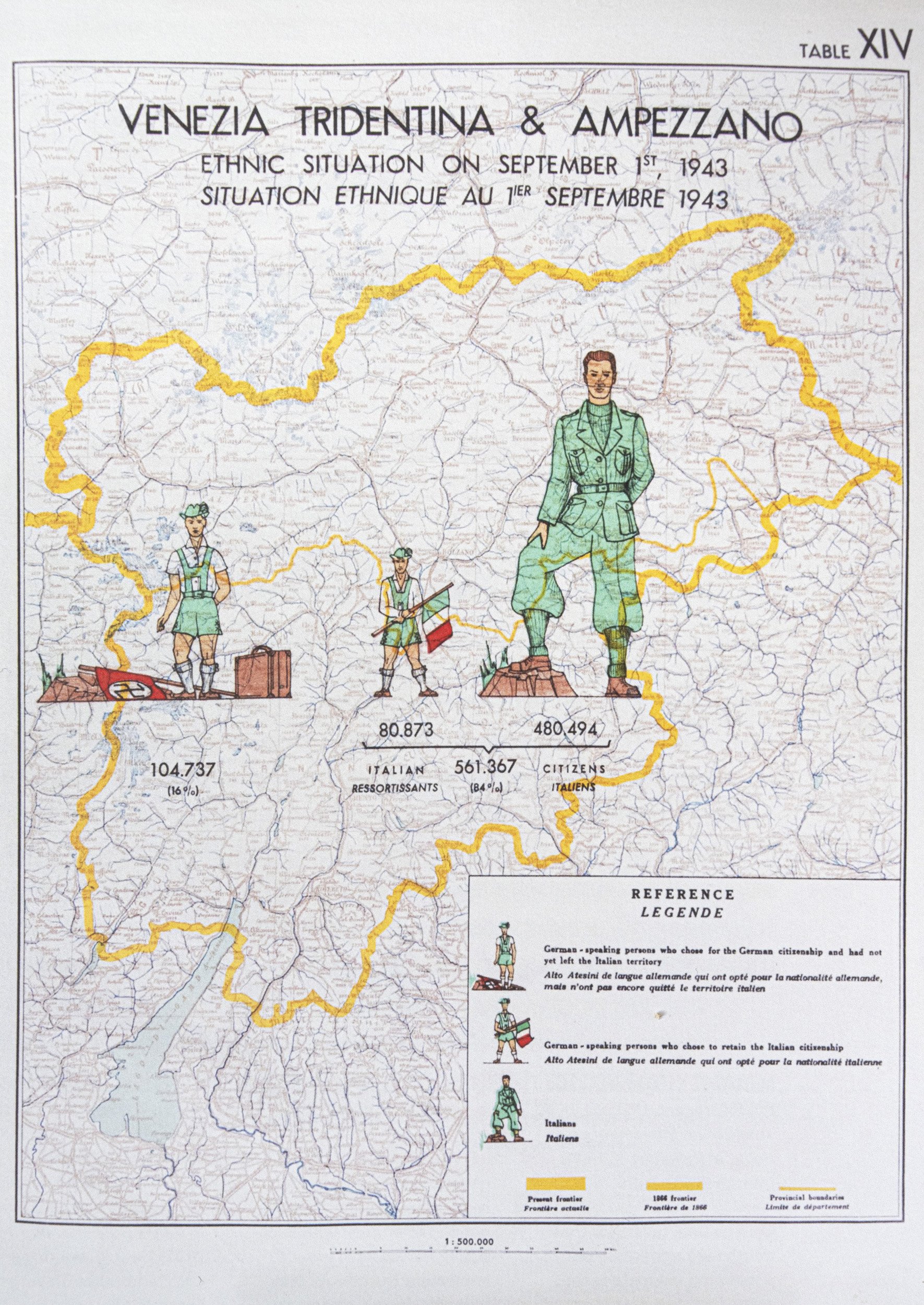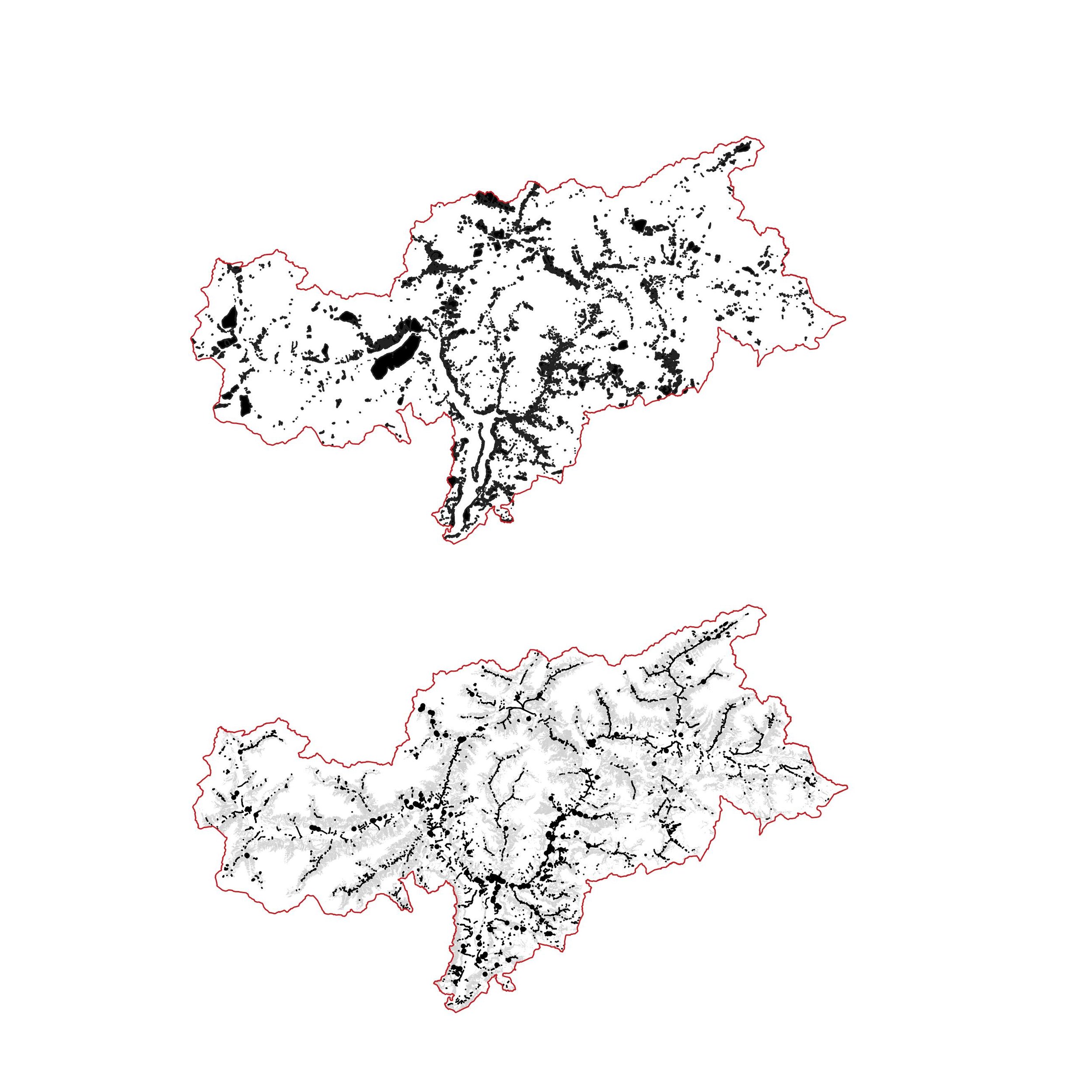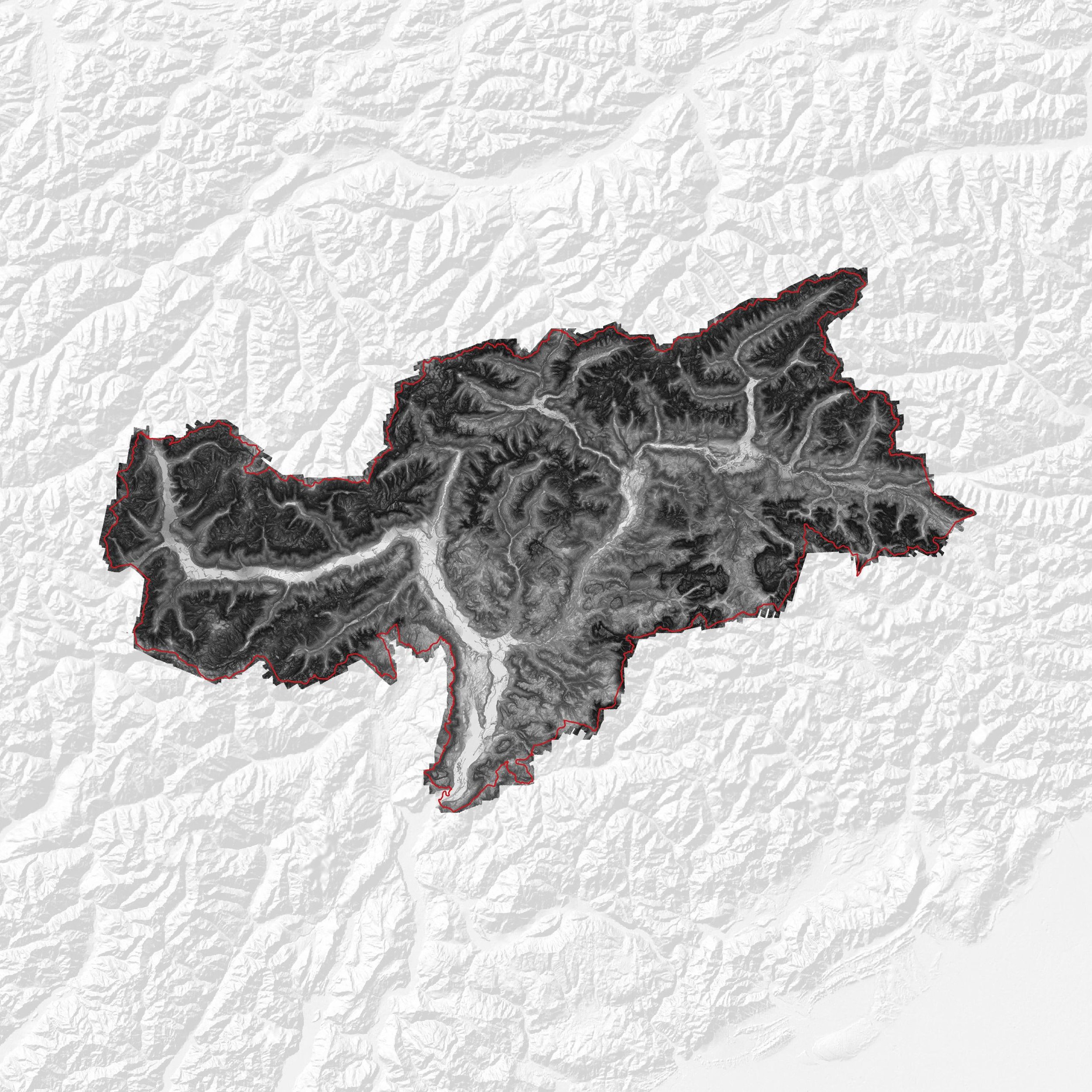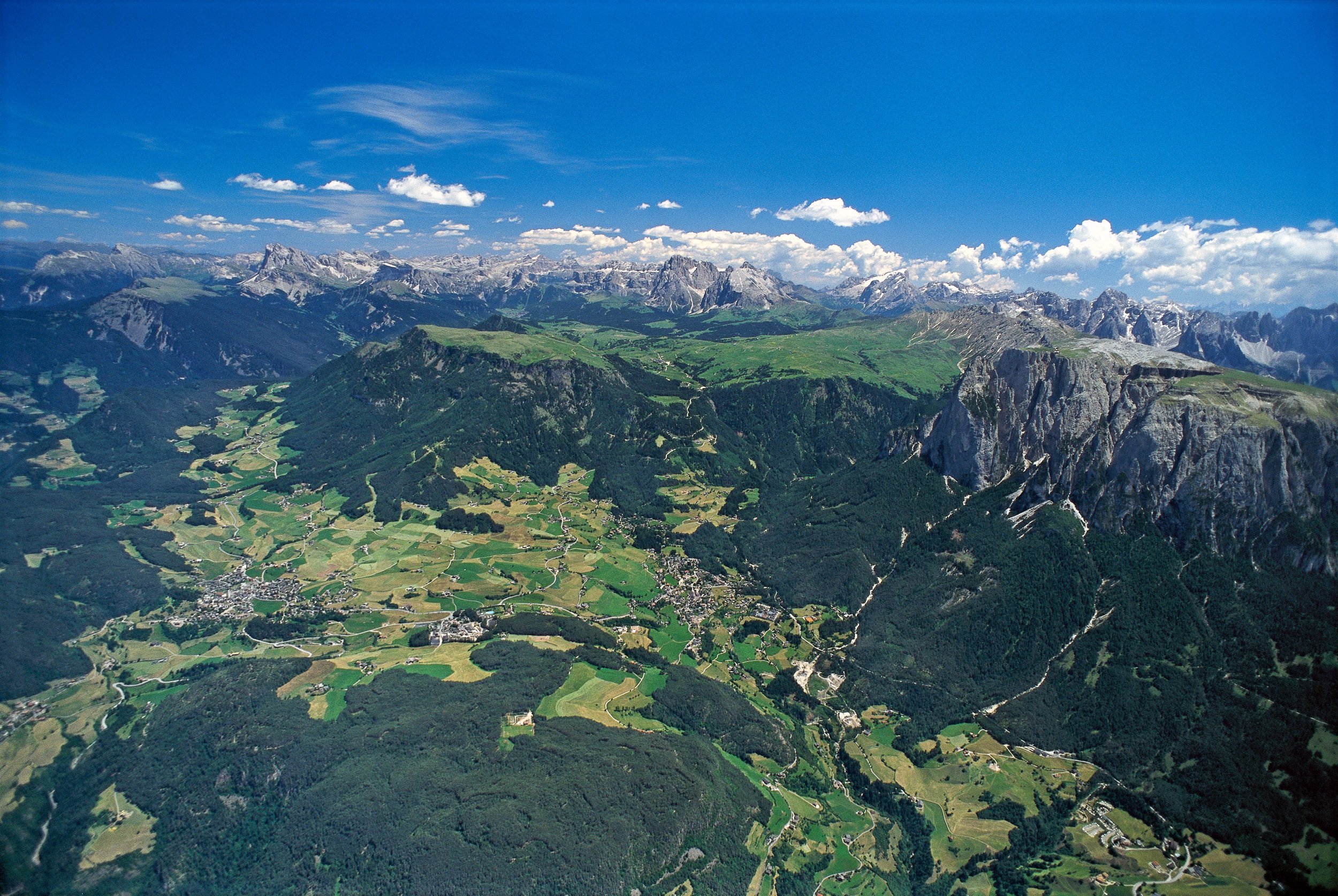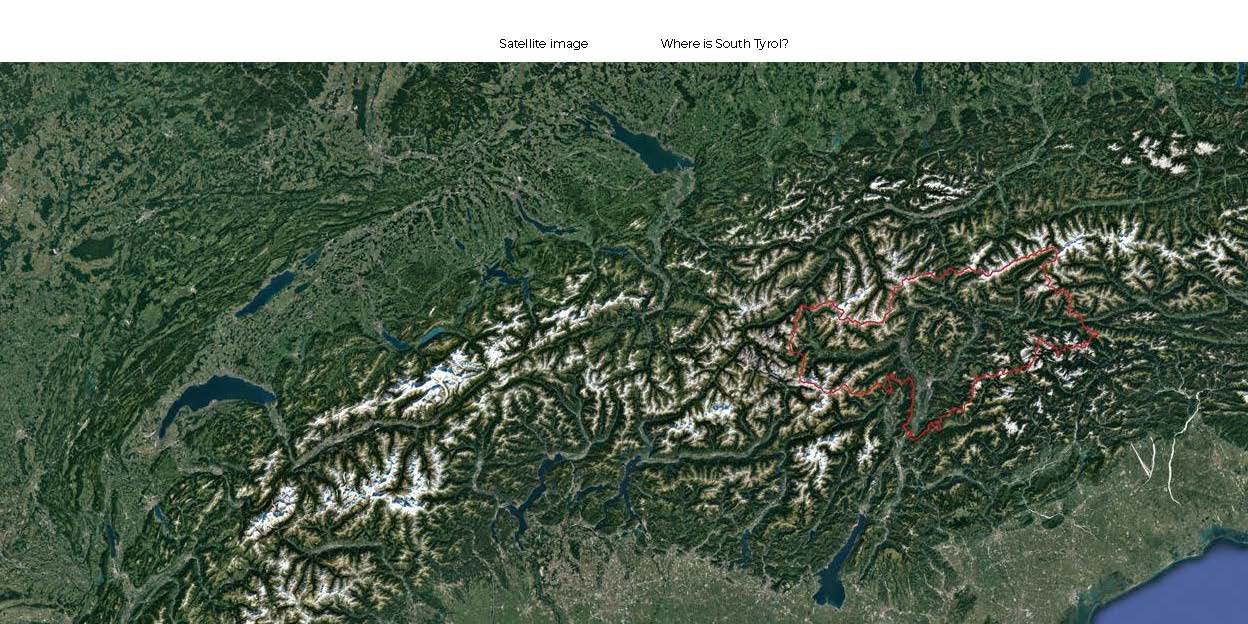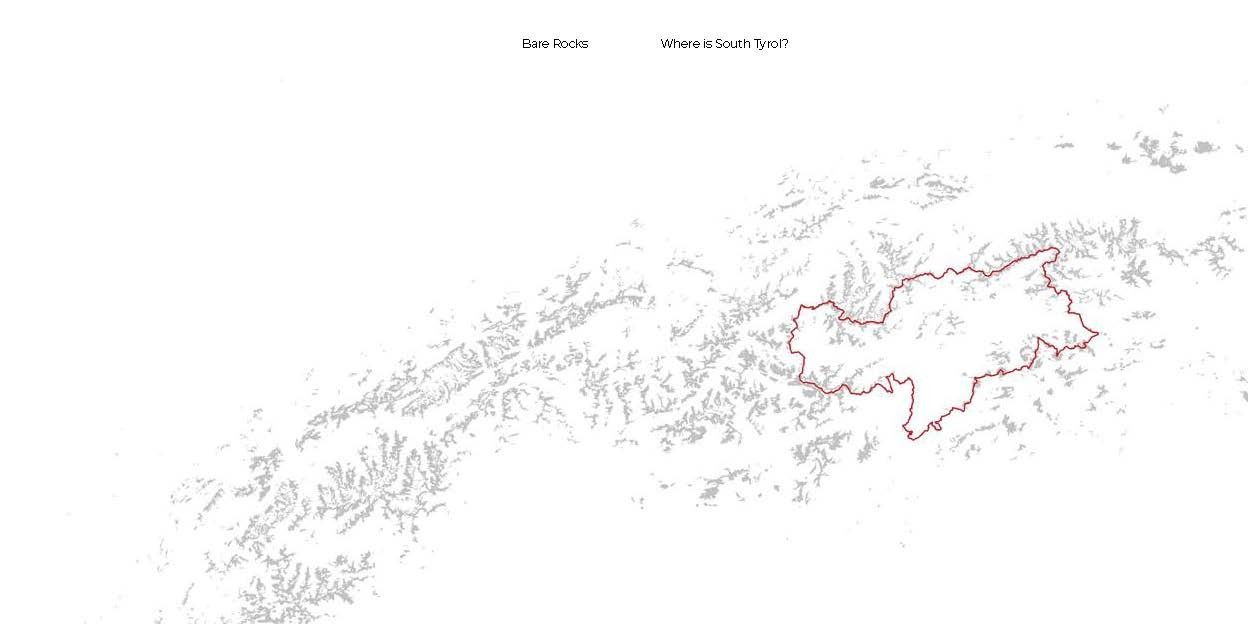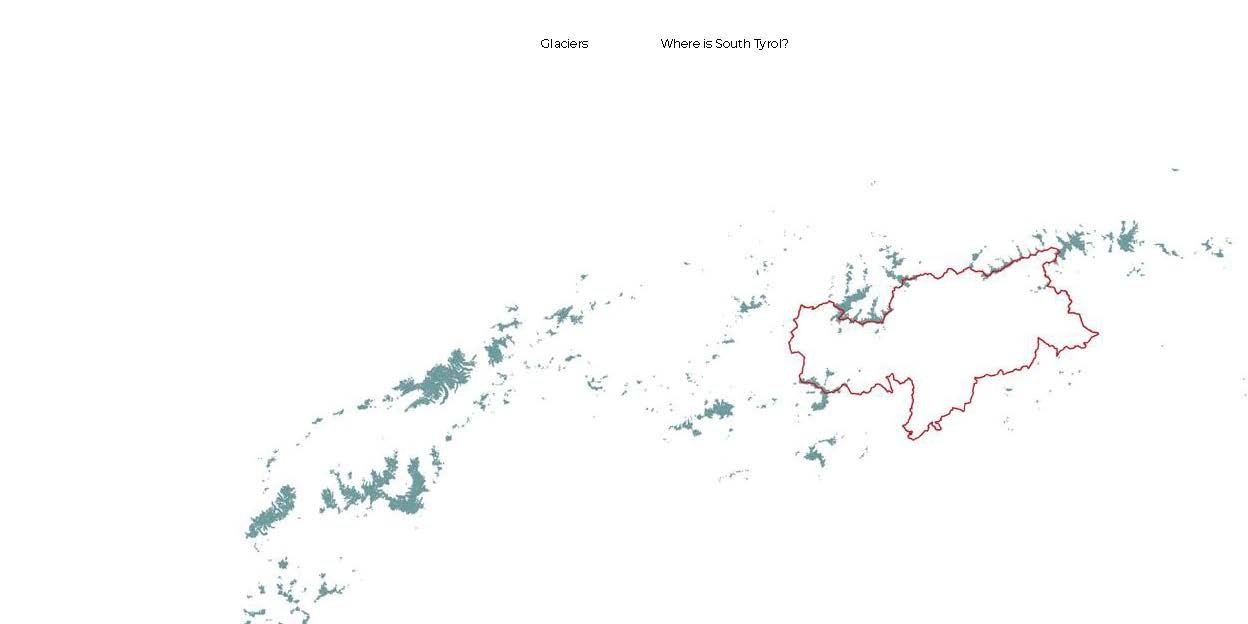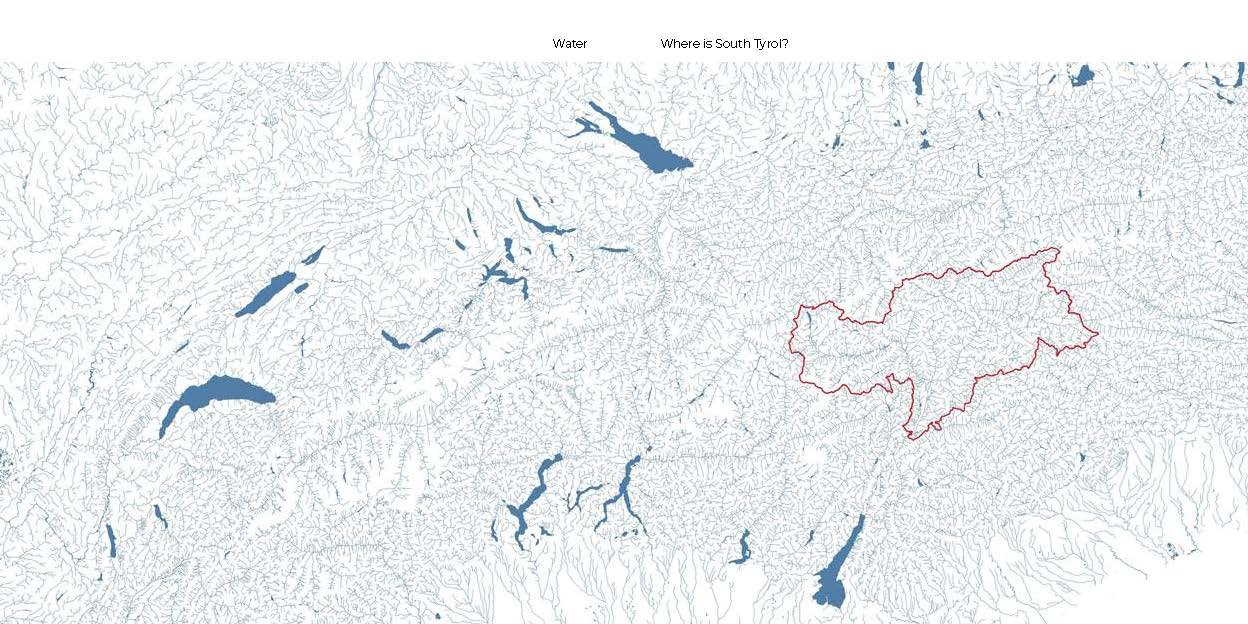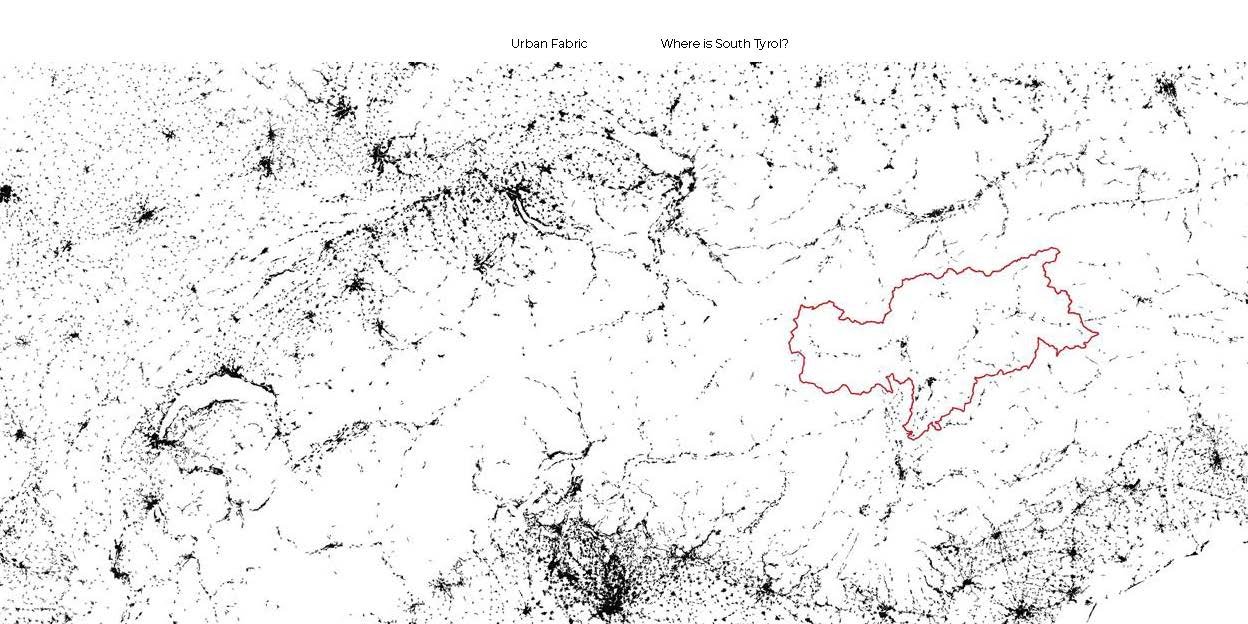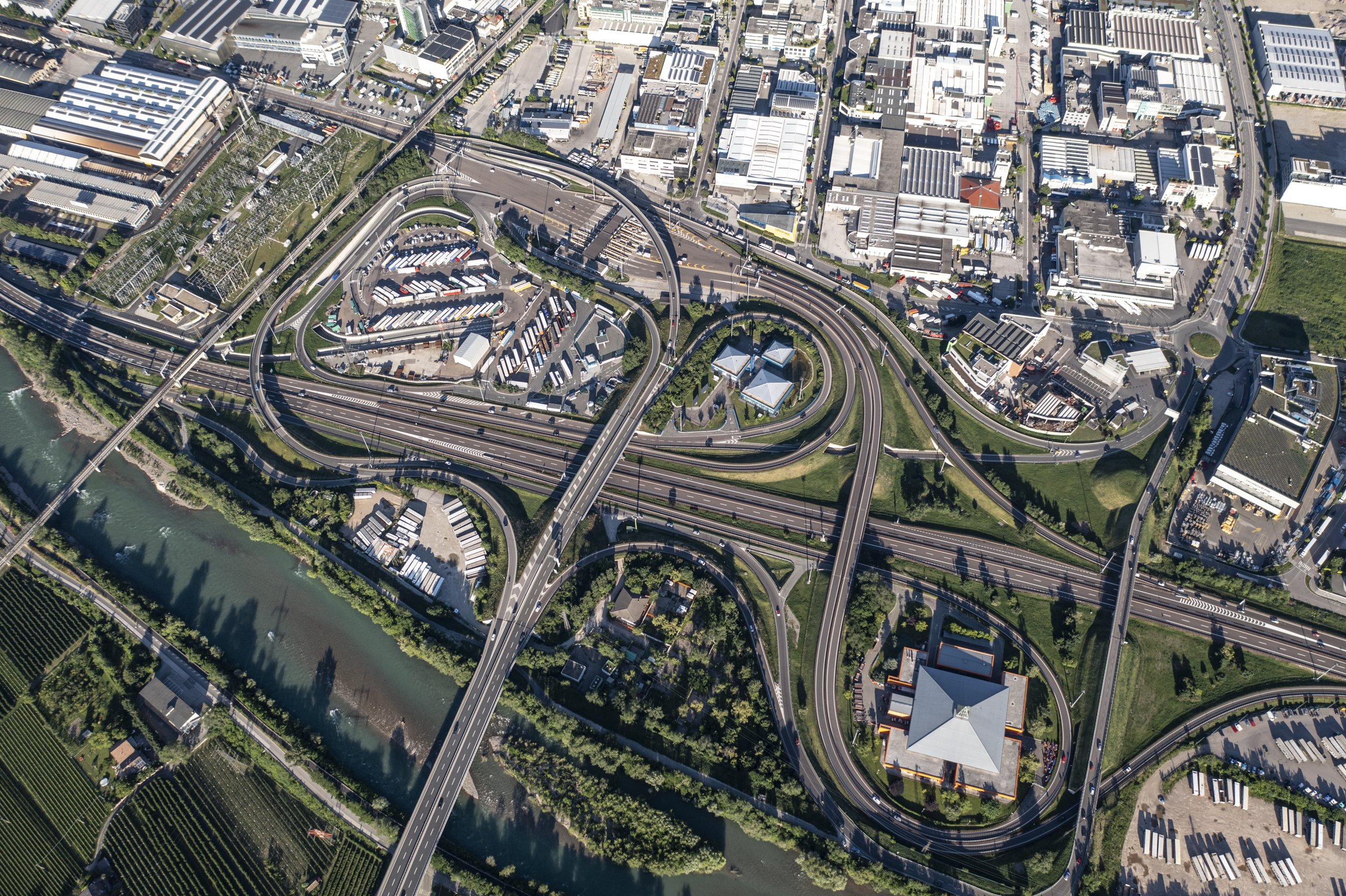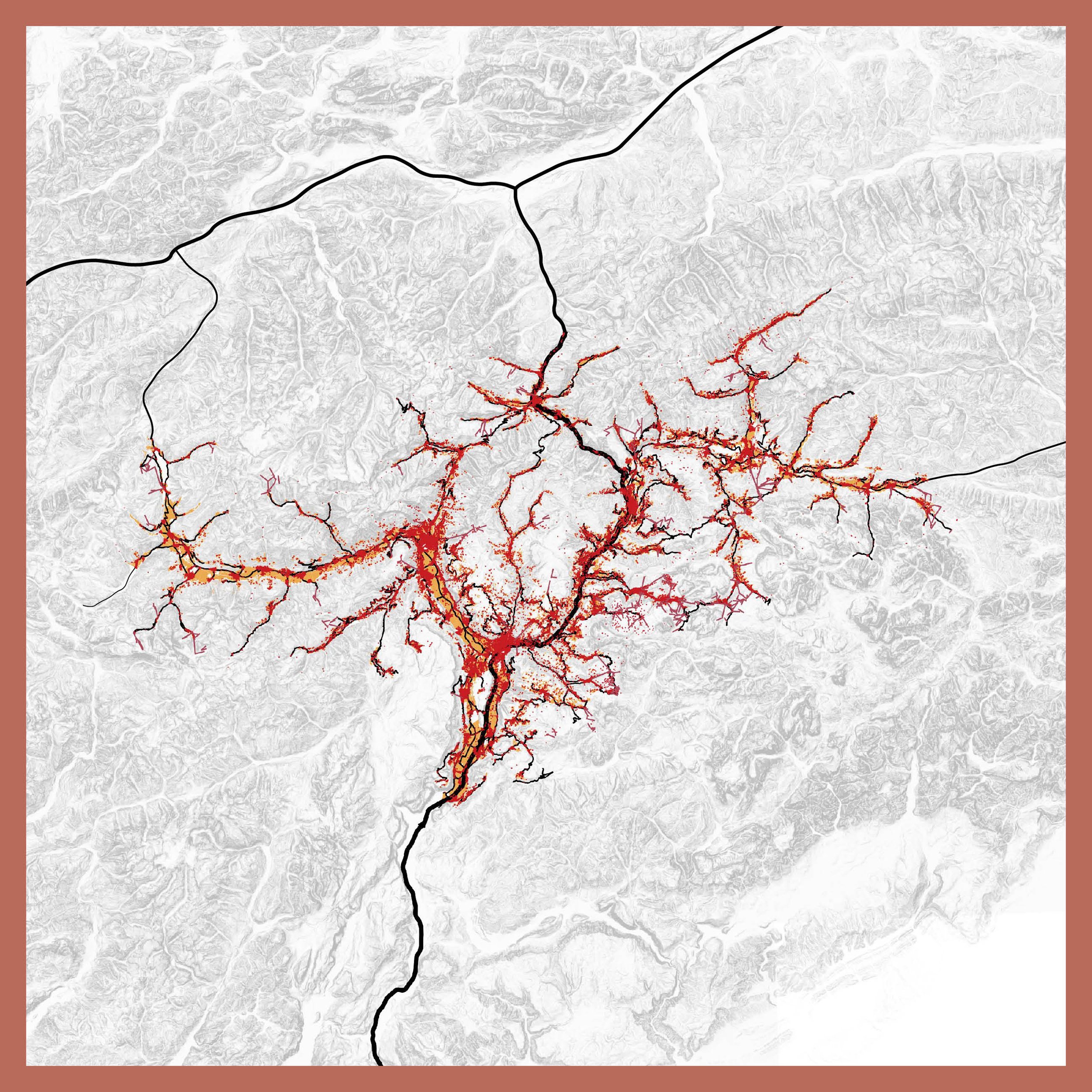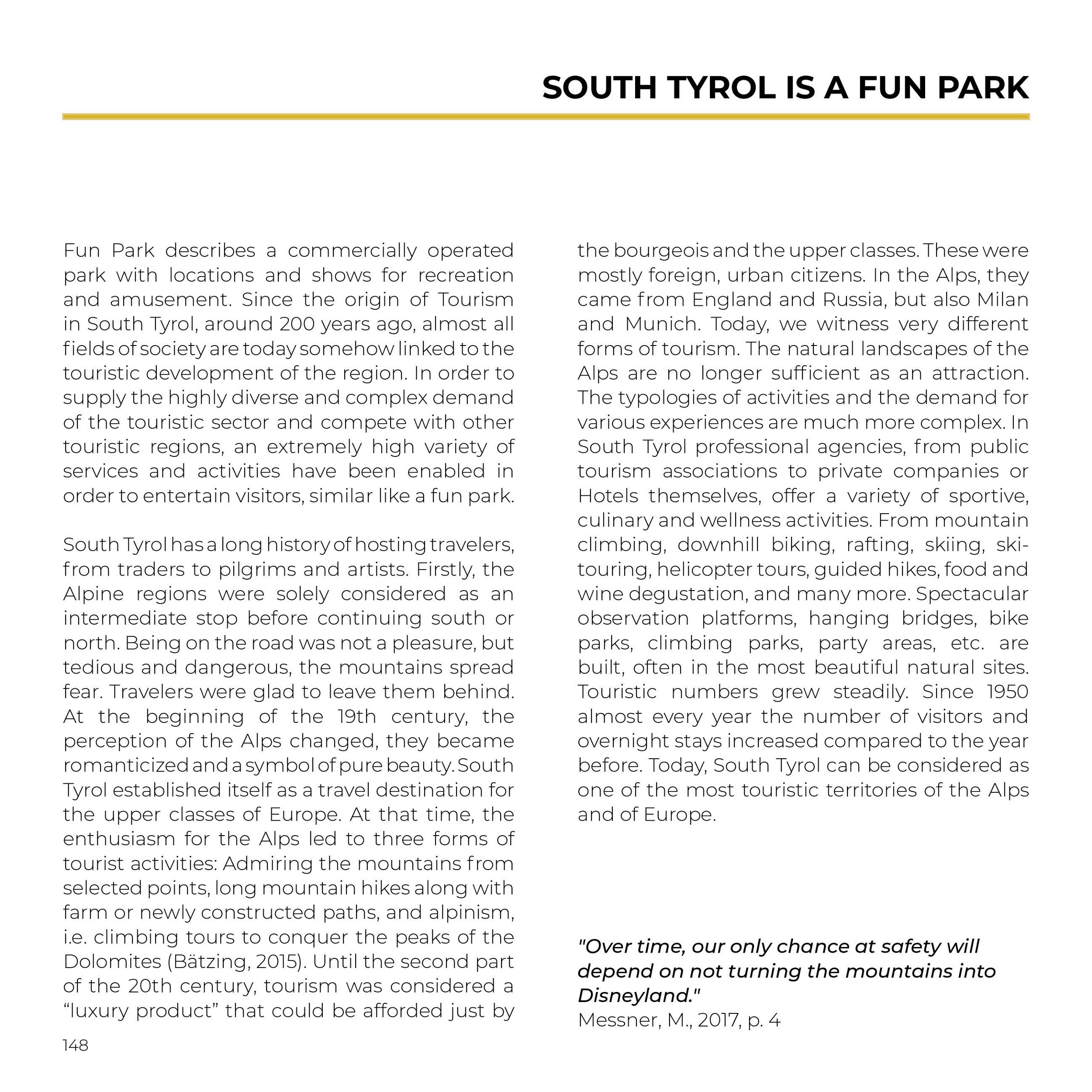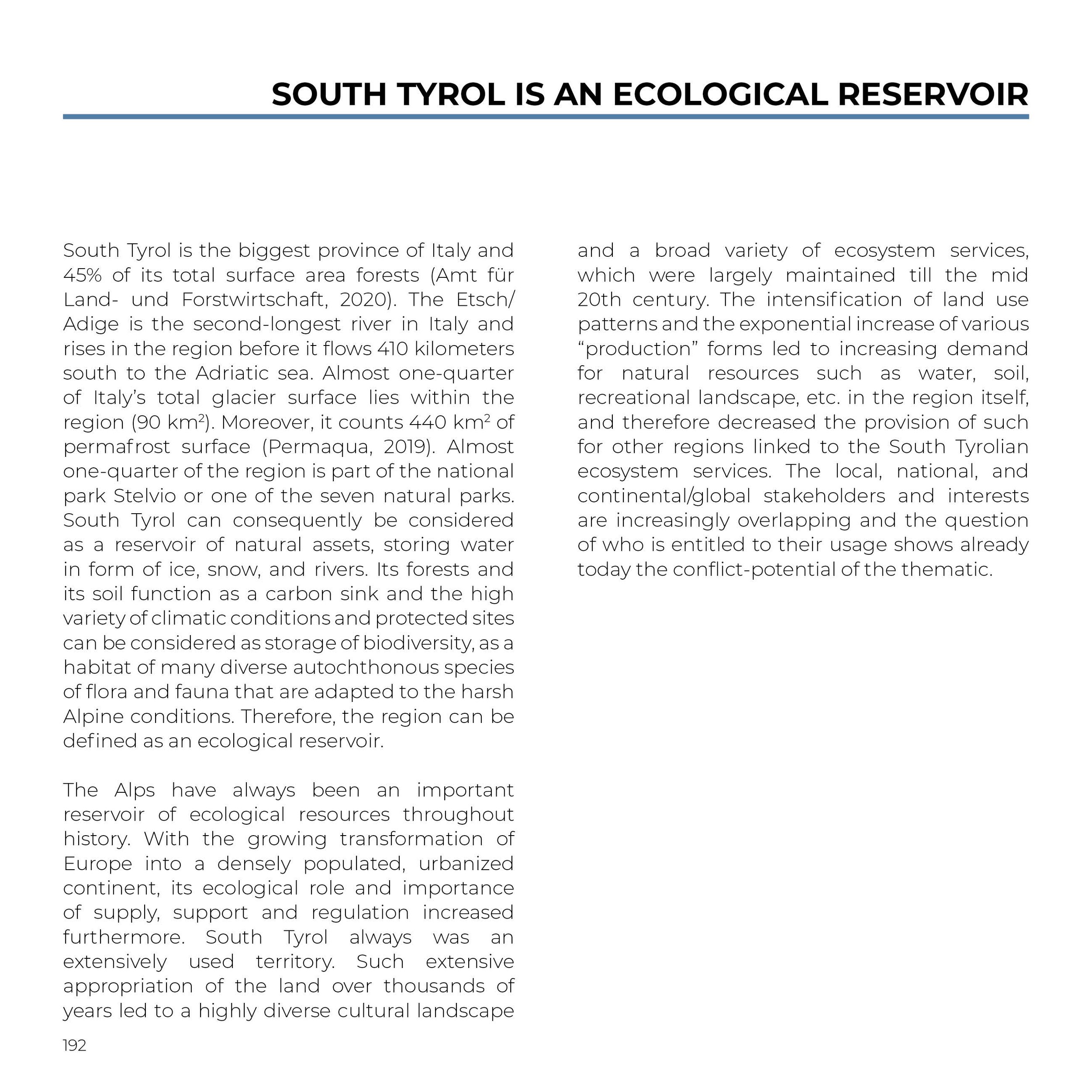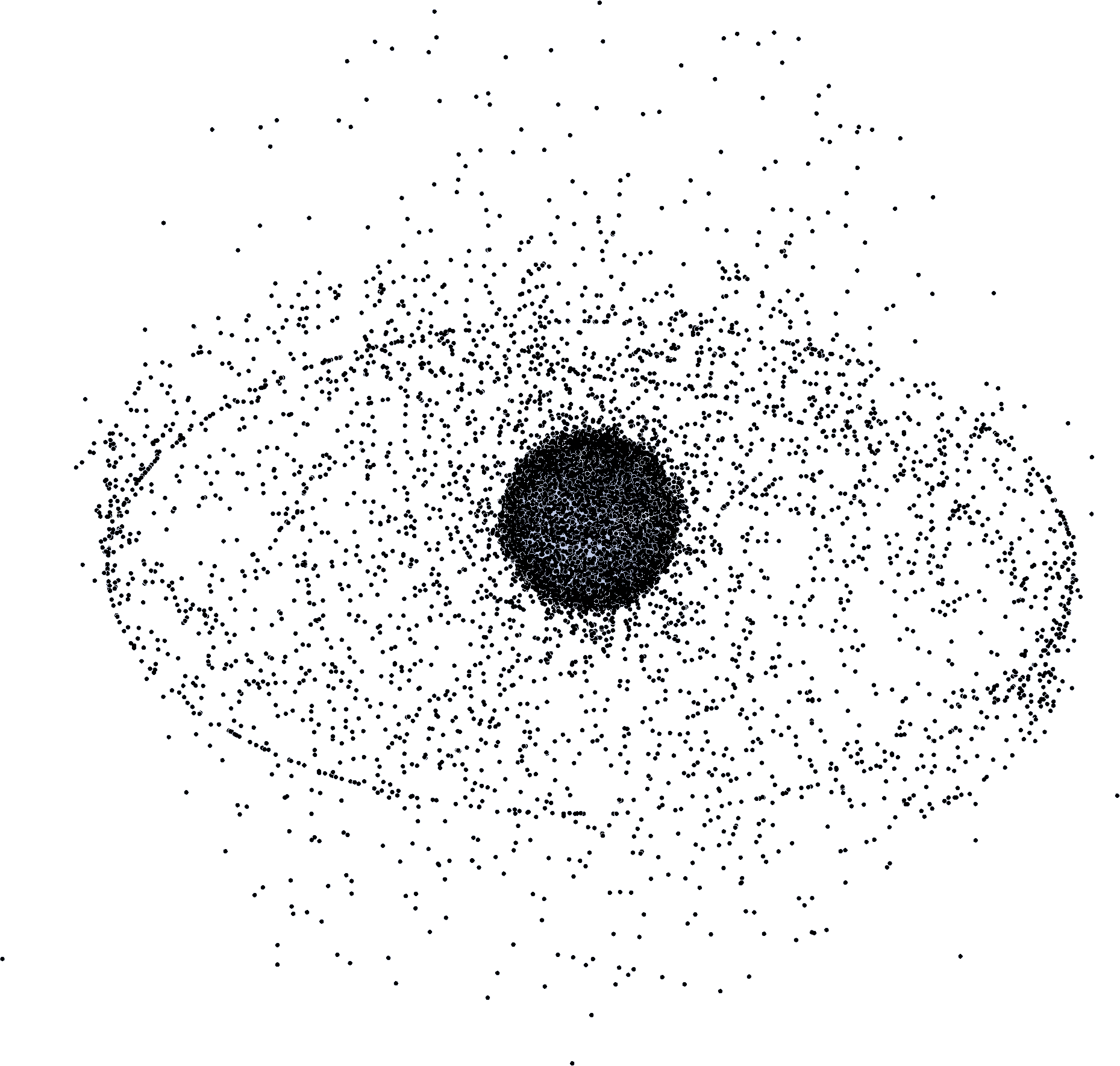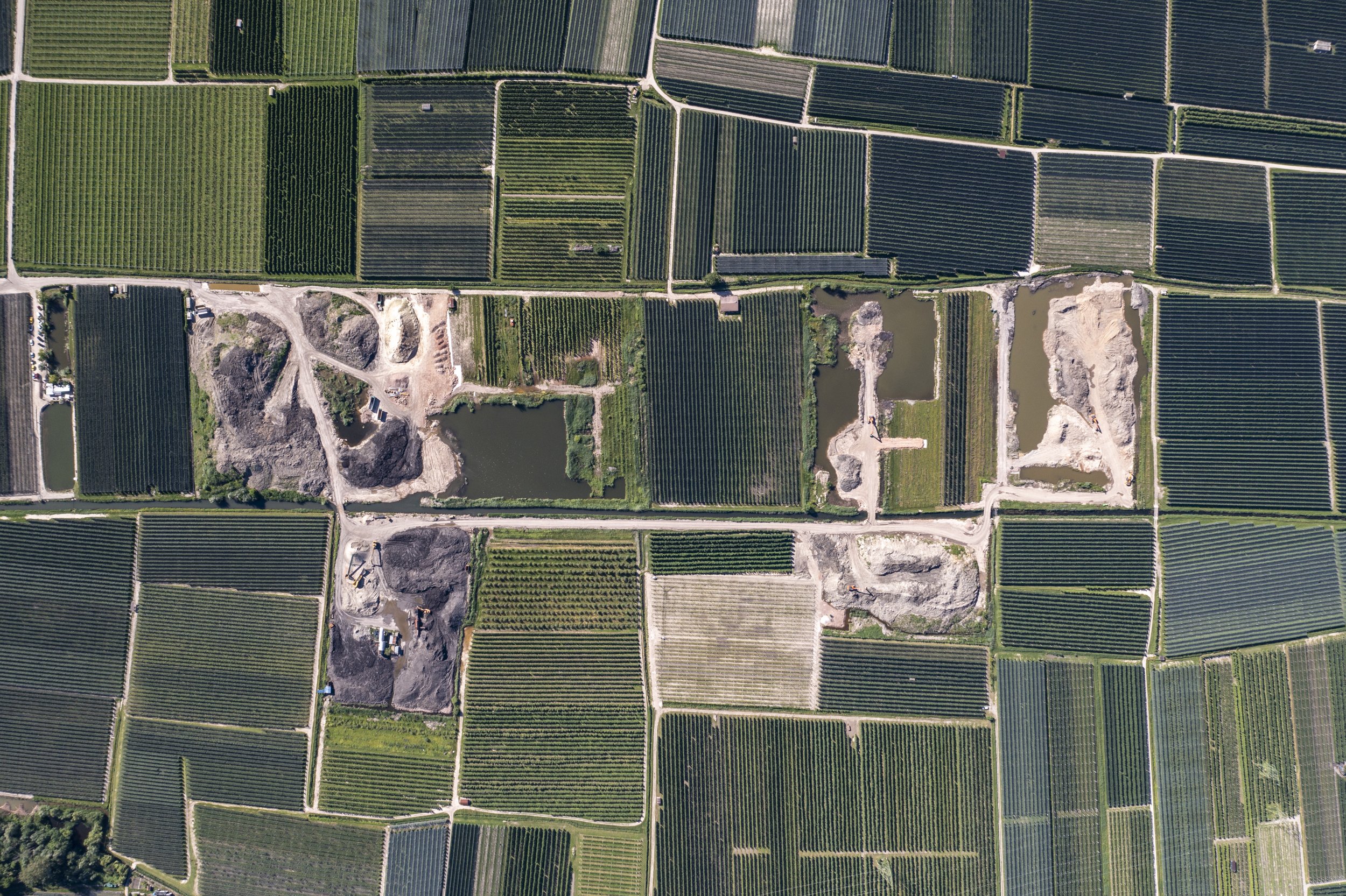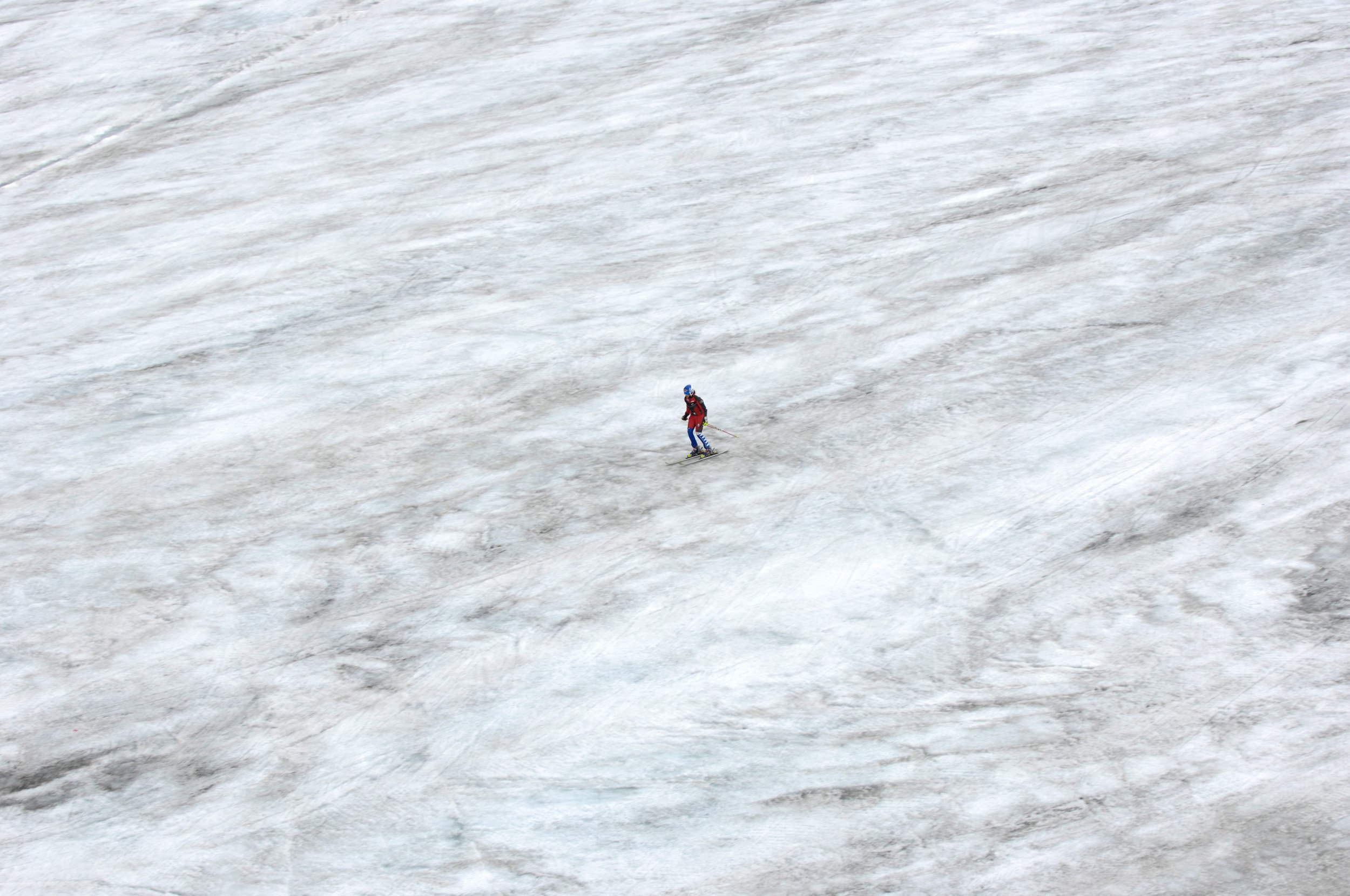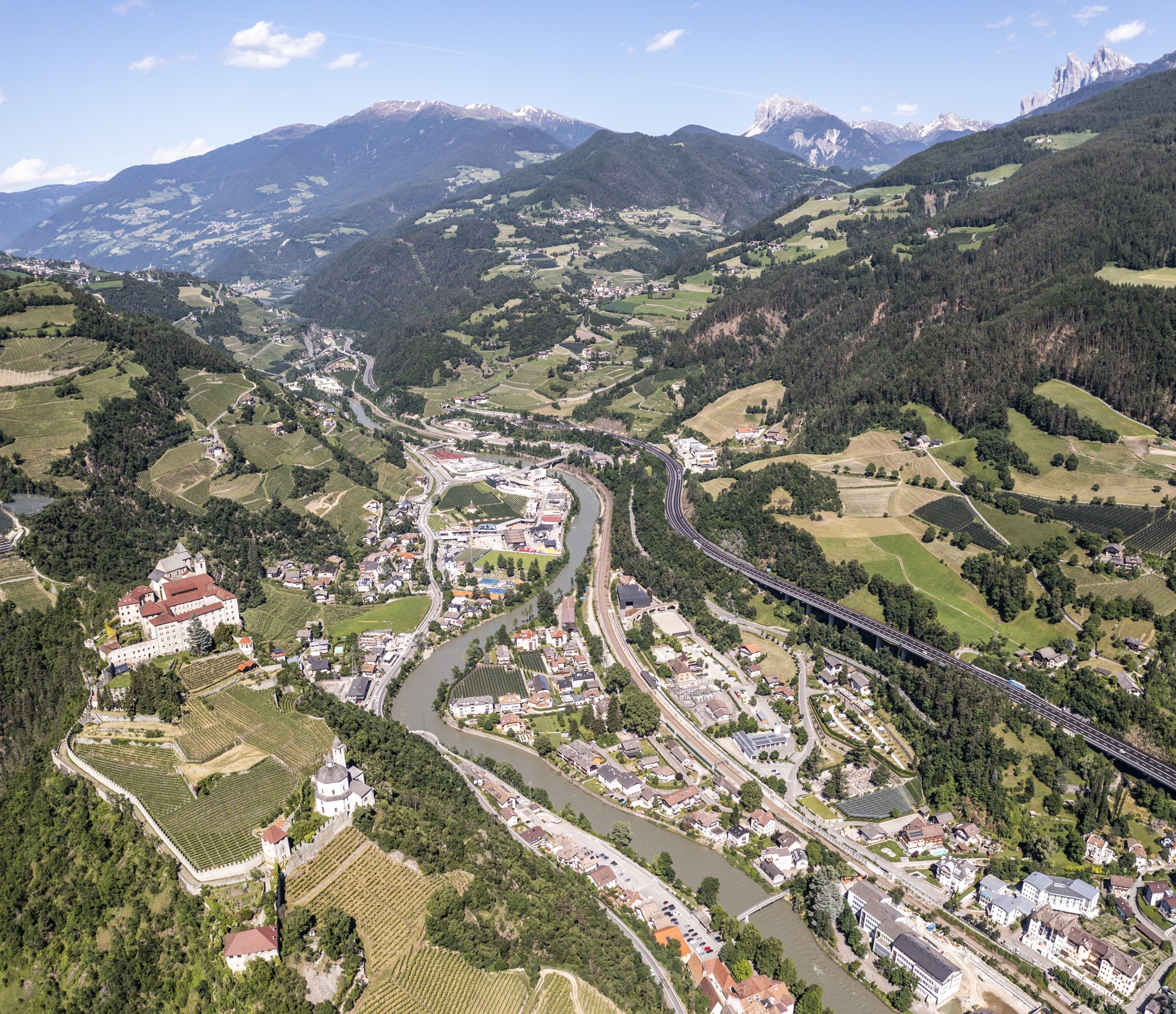Spatial Portrait of South Tyrol
Master Thesis Philipp Rier
Supervisor Ph.D. Arch. Matteo Motti
Politecnico di Milano
Portraying the region of South Tyrol is an attempt to enhance a more critical reflection of the spatial development and public discourse regarding the region’s physical and social realities, that underwent drastic transformations over the last decades and might continue to do so in the future. Until not so long ago, South Tyrol was considered as a “poor” territory, with little economic prosperity, a declining population as well as a conflict-ridden history between its ethnic groups. Yet, in the course of the 20th century, it became one of the wealthiest regions of Europe. Its remarkable process of becoming a global player in several sectors, especially tourism, apple production, Alpine technologies, and renewable energies, enabled broad economic prosperity and the establishment of remarkable livability. While this development can be defined as an extraordinary success, it also brought major upheavals and transformations that call for a deeper reflection. This thesis is an approach to create a communicative and holistic publication in order to provoke and enhance such a reflection.

WHERE IS SOUTH TYROL?
WHAT IS SOUTH TYROL?
WHAT COULD SOUTH TYROL BECOME?
The study comprises three main parts, each of them addressing certain aspects of the existence of South Tyrol by asking three principal questions: Where is South Tyrol? What is South Tyrol? What could South Tyrol become? They are answered by a diverse collection of analytical and interpretative maps, photographs, statistical data, and short textual descriptions in order to make the reader more sensitive regarding the reconfiguration of the territory, its evolution, its current status, and possible futures. This approach portrays a territory that is highly heterogeneous and homogeneous at the same time. Located in between southern and central Europe, between traditionality and modernity, between rurality and urbanity.
South Tyrol is not the little, isolated island of nature and Alpine traditions that it might be often portrayed as. It is part of a global continuum of which it profited strongly in the course of its successful development. While along these paths, numerous achievements have been made, a certain sensitivity to the local environment but also its population seems to have been lost. The thesis is motivated by the wish to examine South Tyrol more closely and from new perspectives, at the beginning of a decade that is considered as a defining point of the global but also local future. The questions raised and answers given throughout this thesis, aim to enhance a more critical reflection and sensitive consciousness about the pace and forms of transformations that South Tyrol was, is, and might be undergoing.
